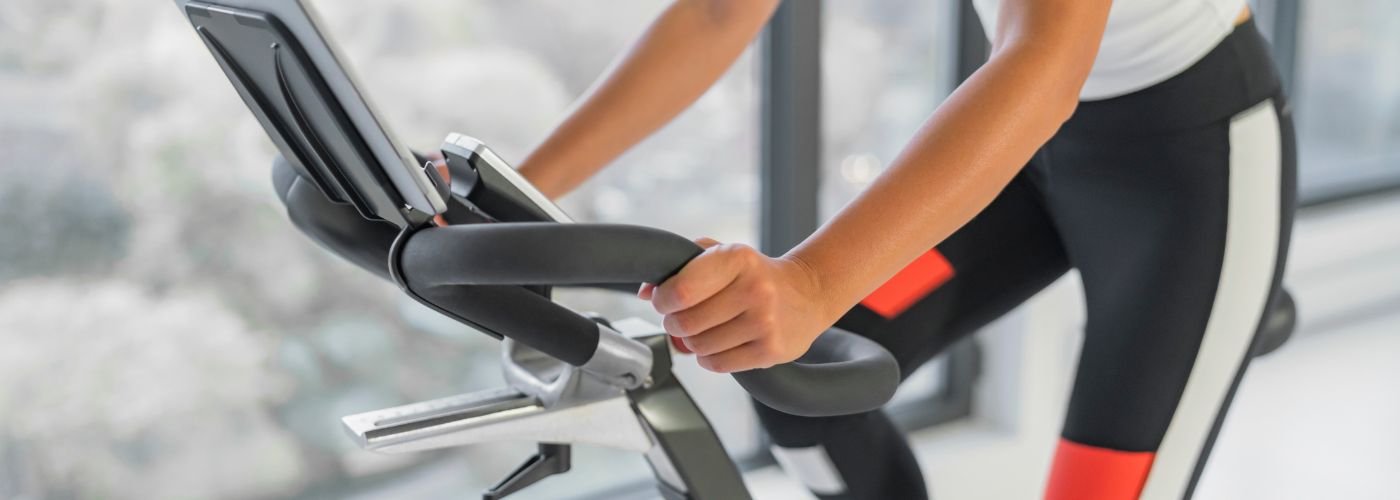High-Intensity Interval Training, or HIIT, has been gaining popularity in the fitness world as an efficient and effective way to improve fitness levels and achieve weight loss goals. With its intense bursts of activity followed by short recovery periods, HIIT workouts have proven to be a game-changer for those looking to maximize their time at the gym. In this article, we will explore the numerous benefits of HIIT workouts and why they are worth incorporating into your exercise routine
What Is HIIT Training?
HIIT involves alternating between short bursts of intense exercise and periods of rest or lower-intensity activity. The main goal of HIIT is to elevate your heart rate quickly and keep it elevated for a specific amount of time, which leads to faster calorie burning and increased fat loss.
One of the key advantages of HIIT training is its time efficiency. Traditional workouts often involve spending long hours at the gym, performing repetitive exercises with little variation.
In contrast, high-intensity cardio sessions typically last around 20-30 minutes but can deliver similar, if not better, results than longer workouts. This makes it an ideal choice for busy individuals who struggle to find time for regular exercise.
Moreover, HIIT training offers a wide range of benefits beyond just burning calories. Some of these benefits include improved cardiovascular health, increased endurance, and enhanced metabolism.
HIIT workouts can significantly improve the capacity of the heart and lungs, leading to better overall cardiovascular fitness. This is because the intense bursts of activity followed by short recovery periods create a demand for oxygen that forces the heart to work harder.
Additionally, HIIT training helps individuals build endurance as they constantly push their limits during each high-intensity interval.
Popular HIIT Workouts

One popular HIIT workout that has gained a loyal following is Tabata training. Named after Japanese researcher Dr. Izumi Tabata, this form of HIIT involves performing 20 seconds of high-intensity exercise followed by 10 seconds of rest for a total of eight rounds.
The exercises can vary from burpees and squats to mountain climbers and push-ups. Tabata workouts typically last about four minutes but deliver an intense calorie-burning punch. In addition to its efficiency, Tabata training is known for improving cardiovascular fitness and increasing muscular endurance.
The short bursts of intense exercise followed by brief rest periods challenge the body’s energy systems and significantly improve aerobic and anaerobic capacity.
The beauty of Tabata workouts lies in their versatility. They can be customized to target specific muscle groups or incorporate a variety of exercises, making them suitable for individuals with different fitness goals.
Another popular HIIT workout is the AMRAP (As Many Rounds As Possible) workout. In an AMRAP workout, participants are given a set amount of time, typically between 10 to 20 minutes, to complete as many rounds of a series of exercises or high reps as possible.
Similar to Tabata training, the goal of AMRAP workouts is to push the body to its limits quickly. This high-intensity format burns calories, improves cardiovascular endurance, and builds muscular strength.
How Does HIIT Workouts Help?

HIIT training not only challenges the body but also helps to maximize calorie burn and promote fat loss. During high-intensity intervals, such as sprinting or jumping jacks, the body is pushed to its limits, causing the heart rate to skyrocket.
This intense effort stimulates the production of adrenalin, which activates the sympathetic nervous system and signals our body to tap into stored fat for energy. As a result, fat cells are broken down and released into the bloodstream to be used as fuel during these demanding workouts.
Additionally, HIIT builds lean muscle mass, which further aids in burning fat even after your workout ends. This is because muscle tissue requires more energy to maintain than fat tissue, so the more lean muscle mass you have, the higher your resting metabolic rate will be.
HIIT training can also help sculpt and grow muscles by targeting specific muscle groups. HIIT training promotes muscle growth and definition by incorporating exercises that focus on different muscle areas.
Moreover, HIIT workouts increase the production of human growth hormone (HGH), which plays a crucial role in building and repairing muscles. The release of HGH during intense intervals of exercise helps stimulate protein synthesis, leading to the development of stronger and more defined muscles over time.
How Often & Long Should HIIT Workouts Be?
Experts recommend performing HIIT workouts 2-3 times per week to allow for sufficient recovery time between sessions. This frequency strikes a balance between giving your body enough time to rest and adapt while still challenging it enough to see progress.
When it comes to the duration of each HIIT session, shorter is often better. Ideally, a typical HIIT workout should last between 20-30 minutes, including warm-up and cool-down periods.
The actual high-intensity intervals within this timeframe usually range from 20 seconds up to a maximum of one minute, followed by brief rest or active recovery intervals.
You can choose whatever exercise that best fits your needs, whether it be running, jump roping, burpees or any other full body exercise.
It’s important to note that since HIIT training is very demanding, please allow the most amount of time to recover possible. This helps the body repair and build the muscles activated during the workout.
What can help with recovery is a balanced diet, sleep, and TENS/EMS devices. These devices work by potentially increasing blood flow to affected areas and preventing nerve pain signals from reaching the brain.
Physical therapists have long supplemented TENS & EMS therapy to better a patient’s quality of life.

Related Stories
5 Ways to Support Bone Strength with HiDow
World Osteoporosis Day (October 20) October 20 is World Osteoporosis Day, and chances are, you’ve...
Oct
FDA-Cleared Is a Flex. Here’s Why.
Pulling Back the Curtain You’ve seen it on boxes, on websites, in ads: FDA-cleared. It...
Sep
This Is Fibro. This Is Larry.
September is Pain Awareness Month. And we’re not here to give you medical definitions or...
Sep
Train Your Relaxation Reflex
How often do you find yourself struggling to switch off after a long day? With...
Aug
Back To School Fitness: Balancing Academics & Athletics
Most student athletes don’t have a motivation problem. They show up. They train hard. They...
Aug
How to Cope with a Sports Injury
Staying active helps your body stay strong. But sometimes, activity leads to pain, strain, or...
Jul